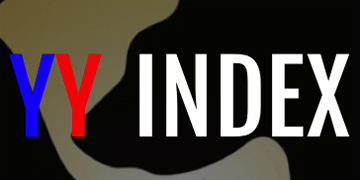Major Indexes on Investor Behavior
A behavior index is a measurement of investor behaviors. It quantifies investors' sentiment to assist the investment decision-making process.
|
In 1993, the Chicago Board Options Exchange (CBOE) introduced the CBOE Volatility Index (VIX Index), which was originally designed to measure the market’s expectation of 30-day volatility implied by at-the-money S&P 100 Index (OEX Index) option prices. In 2003, CBOE announced the new VIX based on the S&P 500 Index (SPX) and estimates expected volatility by averaging the weighted prices of SPX puts and calls over a wide range of strike prices.
VIX has become the world’s most widely followed barometer of investor sentiment. It is a key measure of market expectations in the near term by measuring perceived risks of investors. The greater the perceived risks investors have about stocks, the more they buy "protection Put options, when they are long", which means that the VIX will therefore be moving higher. When the VIX moves higher, the market moves lower because they are inversely related. The VIX Index moves in the opposite direction of the market, you can know what to expect for upcoming market movements by observing what is happening to the VIX. |
|
The Yin-Yang Index is a scientific indicator measuring capital market sentiment developed by the Institute for Systematic Investment Research (ISIR) in 2000. It is solely based on real-time market actions to identify market cycle changes. This less known indicator has been extensively validated as the best market psychology measure so far. The Index ranges from 0 - 100 with 50 as the Yin-Yang crossing point.
The Yin-Yang Index calculates the overall sentiments of buyers and sellers for any securities with sufficient trading volume as basis of statistical measurement. It is calculated by separating all trading actions into bull and bear statistical populations. The dual-mode distributions with possible long tails (black swan) are modeled to capture the sentiment statistics. This makes the Index fundamentally different from the Modern Portfolio Theory which oversimplifies the market actions as a single-mode bell-curve only (random-walk). The rationale behind the Yin-Yang Index is that the stock market trend reversal happens where the overall bullish forces overtaking the overall bear forces in controlling the market direction, or vice versa. The trend reversal can be detected early by measuring trading actions from smart money (such as insider and institutional trading). The stock market behaves from quantitative change to qualitative change. The unpredictable nature of future significant events trigger the transition of such changes. The stock market trend can be predicted during quantitative phase and detected when transition to qualitative phase is triggered. |
|
The Fear & Greed Index is developed by CNNMoney. This index is based on seven indicators: Stock Price Momentum, Stock Price Strength, Stock Price Breadth, Put and Call Options, Junk Bond Demand, Market Volatility, and Safe Haven Demand.
Each indicator is measured against its own average reading from 0 to 100. A reading from 0 to 49 indicates fear. A reading of 50 is neutral. Readings from 51 to 100 demonstrate that investors are greedy. The resulting index is calculated by taking an equal-weighted average of those seven indicators.
|
Other Notable Indexes on Investor Behavior
Other significant indexes on investor behavior measurement include
The above indexes are all survey based so that the results are unavoidably delayed. If you believe that any other significant market behavior index should be included here, please contact us.
- The U.S. consumer confidence index (CCI) is an indicator designed to measure consumer confidence, which is defined as the degree of optimism on the state of the economy that consumers are expressing through their activities of savings and spending. The CCI was started in 1967 and is set in 1985 to have a benchmark of 100.
- The University of Michigan Consumer Sentiment Index is a consumer confidence index published monthly by the University of Michigan. The index is normalized to have a value of 100 in December 1964. Each month at least 500 telephone interviews are conducted of a continental United States sample. Fifty core questions are asked.
- The Stock Market Confidence Indexes by Yale School of Management report four different investor confidence indexes: One-Year Confidence Index; Buy-On-Dips Confidence Index; Crash Confidence Index; Valuation Confidence Index. Each is measured in percent for a certain view and is derived from the responses to a survey question since 1989 to a sample of respondents.
The above indexes are all survey based so that the results are unavoidably delayed. If you believe that any other significant market behavior index should be included here, please contact us.


